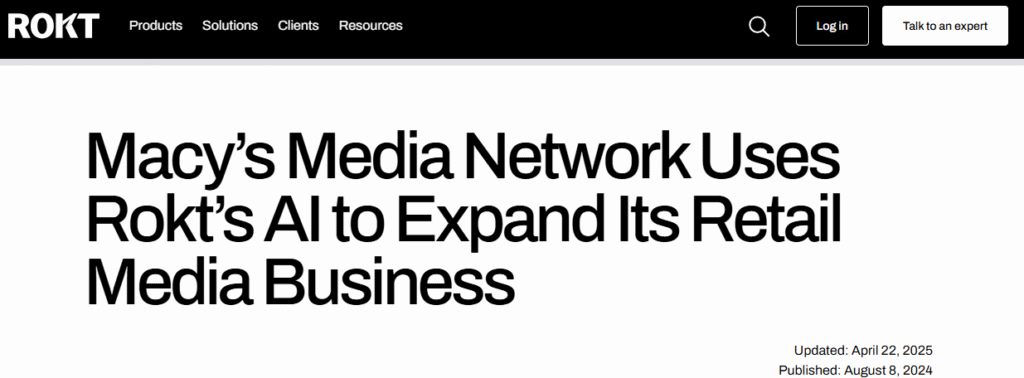By Team BuzzBizzAI
02 Sep, 2025
Marketing has always been about stirring emotions. From Coca-Cola’s “Share a Coke” campaign to Nike’s “Just Do It,” the most successful ads don’t just sell products; they sell feelings. What has changed is the toolkit. With the rise of Emotional AI, brands now have the ability to measure, predict, and respond to human emotions at scale. It’s not science fiction. It’s happening in call centers, retail, advertising, and even politics. And it’s reshaping the way companies think about persuasion.
What is Emotional AI?
Emotional AI, sometimes called affective computing, is the use of artificial intelligence to detect, interpret, and respond to human emotions. Instead of just crunching numbers, this technology tries to read the room, whether that room is a customer service call, a TikTok video, or a supermarket aisle.
The tools vary:
Voice analysis: picking up tone, pitch, and pauses to gauge frustration or excitement.
Facial recognition: tracking micro-expressions like a furrowed brow or smile.
Text sentiment analysis: decoding emotion in written reviews, chats, or social media posts.
The idea is to use these signals to adapt messaging in real time. Think of it as marketing that doesn’t just know who you are but how you feel in the moment.
Why Marketers Care
Traditional targeting relies on demographics and behaviors: age, income, location, browsing history. Emotional AI adds another layer: mood. If someone is anxious, they may respond to reassurance. If they’re energized, they might leap at aspirational messaging. Emotional AI promises campaigns that are not only personal but deeply timely.
Real-World Examples
1. Retail and Customer Experience
Macy’s experimented with emotional AI in customer service calls. By analyzing tone of voice, the system flagged when a customer was frustrated and guided human agents with suggestions to calm the situation. The result: shorter calls and happier customers.

Source- Rokt
2. Advertising and Media
Affectiva, a pioneer in this space, worked with brands to test emotional reactions to ads. Using facial recognition, it tracked which moments in a video made people laugh, look away, or lean in. Instead of relying on surveys, marketers could see real-time emotional data to fine-tune content.
3. Automotive
Car makers like Ford and BMW are experimenting with in-car emotional AI. Cameras and sensors watch drivers for signs of fatigue or stress, adjusting music, lighting, or even suggesting a rest stop. For marketers, this opens a new frontier: imagine car dashboards that recommend a coffee brand when you look drowsy.
4. Healthcare and Wellness
Emotional AI isn’t just for selling sneakers. Startups use it in therapy apps to detect emotional distress in patients. For marketers in health tech, this creates opportunities to match interventions or promote services when users need them most.
5. Political Campaigning
Perhaps the most controversial application is politics. Campaign strategists have long used emotion to sway voters, but Emotional AI offers sharper tools. By scanning social sentiment, campaigns can tailor speeches, ads, and social media posts to the collective mood of a region almost instantly.
The Promise and the Risk
The upside is obvious: more relevant, human-centered communication. Instead of being bombarded with generic ads, consumers see messaging that feels like it “gets” them. For brands, that could mean higher engagement and loyalty.
But there are ethical concerns. Do consumers want machines reading their feelings? How accurate are these systems across cultures, accents, and identities? And at what point does persuasion become manipulation?
Governments are starting to take notice. The EU’s AI Act, for example, has flagged emotion recognition as a high-risk category, especially in workplaces and schools. Transparency and consent will likely become central to whether this technology gains public trust.
Where We Go Next
Emotional AI is not perfect, but it is maturing fast. For growth marketers, the takeaway is not to jump blindly into the technology but to understand its trajectory. The most effective campaigns of tomorrow may be those that blend hard data with emotional intelligence, balancing personalization with respect for privacy.
At its best, Emotional AI can help brands create experiences that feel intuitive, responsive, and almost human. At its worst, it risks becoming another form of digital surveillance. The art lies in knowing where to draw the line.
One truth remains: emotions drive decisions. Whether it’s a new pair of sneakers, a streaming subscription, or a vote, feelings often tip the scale. Emotional AI simply gives marketers new instruments to play on an old, familiar string.



No Comment! Be the first one.